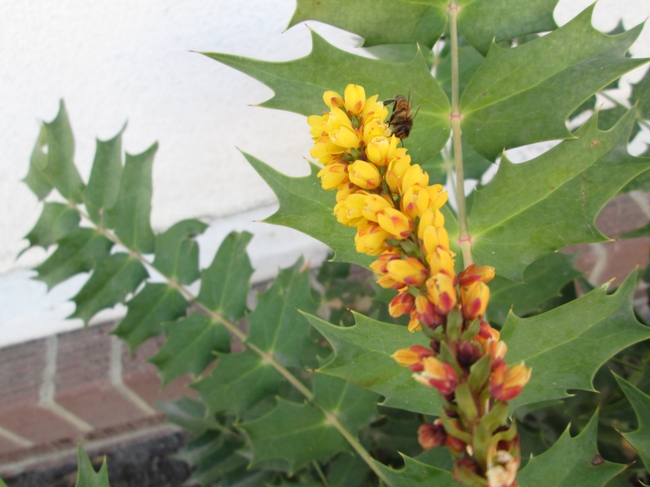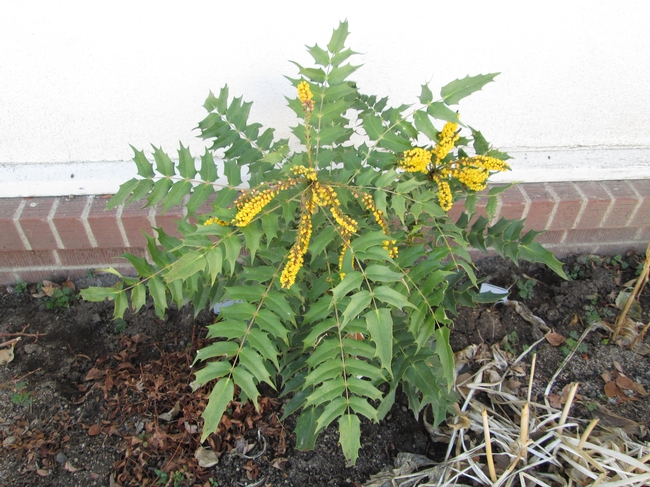Mahonias belong to a genus of shrubs which are closely related to barberries (Berberis). They originate from many different areas of the world, including the Pacific Northwest and the Southwestern deserts of the United States, while many with the most striking forms come from China and Japan.
They are mainly characterized by evergreen, spiny pinnate leaves which are leathery in texture and sometimes glossy so that they resemble holly. They are valued for their yellow flowers which are produced in either rounded clusters or elongated spikes in late winter and early spring when little else is blooming, and these are beloved by honey bees, so provide some welcome early food whenever the sun is warm enough for bees to fly.

In the garden they can cope with a variety of different exposures depending on the species, but most prefer shade, or shelter from hot afternoon sun in desert areas. Many will even grow against a north facing wall. Heights also vary by species, some being creeping while others can grow to 12 ft., although that height would only be reached under optimum conditions. Water requirements also vary and I have found that although many originally come from the Pacific Northwest they are surprisingly tolerant of dry shade. In general the Mahonias are considered easy to grow although they may take a little while to settle in after transplanting.
For many years I avoided growing these plants because, although the leaves were quite handsome, the actual plants that I saw in peoples' gardens tended to look rangy but I have since discovered that with occasional, judicious pruning they can be quite handsome, and since they do grow in the high desert, and are generally ignored by deer they have much to recommend them.
Last year I planted a variety of Mahonia x media 'Lionel Fortescue' on a north facing wall, and not only did it come through the winter with flying colors, flowering early as promised in mid February, but it also coped with brief blasts of afternoon sun coming from the west without any damage to its leaves. It has a strong upright habit which promises to be a striking focal point in the border.
The more commonly planted Mahonia aquifolium, or Oregon Grape is generally lower growing and spreads by underground stems. It may grow to 5ft. high under ideal conditions, but can also be used as a ground cover if tall stems are removed at the base. Often new growth is reddish in color.
The desert native, Mahonia fremontii is an upright, multi-stemmed shrub with very spiny gray-green leaves and short spikes of yellow flowers in late spring. It is generally considered hardy in USDA Zone 7, although it comes from the Southwestern desert. It requires very little water.
Another popular hybrid is Mahonia "Skylark" which grows to 5ft tall, has reddish new leaves which then take on a purple hue in winter. The berries are dark purple. It requires little water.
There are many other varieties of Mahonia, so whether you are looking for a low-growing foundation shrub for an informal woodland setting, or a bold focal point, a scan of specialist nurseries should provide you with a plant to fit your needs.
More information at:
sonomamg.ucanr.edu/Garden_Sense_Master/GardenSense_Plants/?uid=93&ds...
oregonstate.edu/dept/ldplants/mapin.htm
